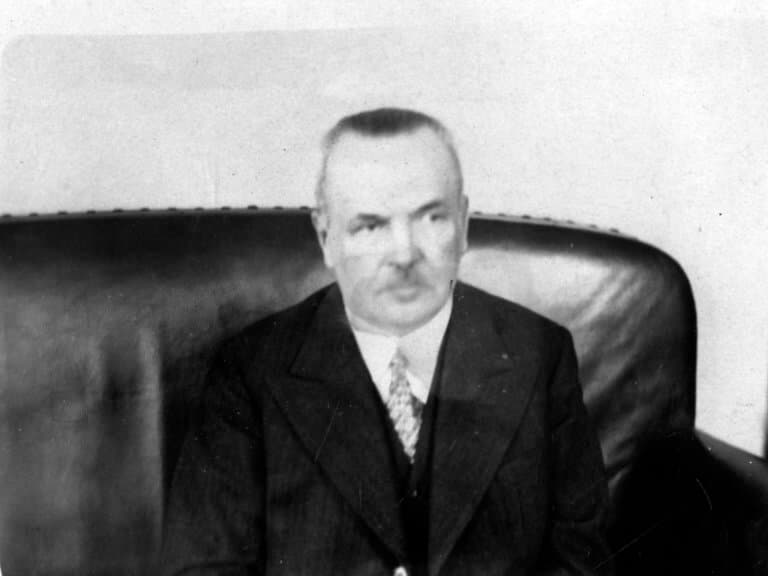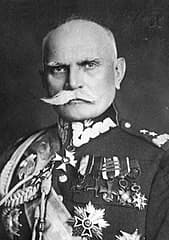There was a period in the history of the Polish Red Cross when legally, at the same time, two or even three Main Boards of the Polish Red Cross operated.

Three Main Boards of the Red Cross operating simultaneously
Such a situation occurred during World War II. In connection with the tragic war events, the authorities of the International Committee of the Red Cross made an unprecedented decision: for the first time, they agreed to break the rules that apply unconditionally to national Red Cross and Red Crescent societies, related to the existence of one central authority representing the society that interacts with the government, which legally recognizes the given national Red Cross society.
The activities of the Red Cross in Poland until the outbreak of World War II were in accordance with all the principles of the International Red Cross (IRC). The situation complicated in the autumn of 1939. In Warsaw, there was a Main Board with a newly elected President Wacław Lachert in October and Maria Tarnowska as vice-president and delegate to Krakow. The Main Board in Warsaw was unable to establish contact with the second Main Board of the Red Cross in Paris, which was also formed in the autumn of 1939.

In August 1939, the president of the Red Cross gen. Aleksander Osiński and a member of the Red Cross Board for foreign relations Anna Paszkowska went to the United States and Canada to ask the American Polonia for financial assistance for the purchase of essential items collected by the organization in case of war. This delegation did not return to Poland. After the establishment of the Polish Government in France, Aleksander Osiński and Anna Paszkowska went to Paris to create a new Red Cross Board there. The International Red Cross consented to such action in November 1939. The emergence of the second board of a national society, operating outside the territory of the country, was contrary to the applicable principles of the Red Cross. However, the IRC considered the most important goal to be the action for the population, providing humanitarian assistance, and the possibility of effective cooperation. In 1940, the Paris Main Board moved with the emigrant government of Poland to London, where it continued to operate energetically. Formal legal matters were left to be resolved after the end of hostilities. During the war, both Boards operated independently of each other and tried to achieve as much as possible.

The situation around the Red Cross complicated even further in 1944. At the time of liberation from German occupation, the authorities of the Lublin District of the Red Cross transformed into the first Main Board of the Red Cross in the liberated territory of Poland. Ludwik Christians became the president. This board was under the supervision of the Polish military command and the political factors of the new authorities. Its tasks included caring for the civilian population, prisoners liberated from concentration camps and labor camps, and soldiers fighting the Germans on the right bank of the Vistula. At this moment, there were and operated as many as three Main Boards of this organization (in Warsaw, London, and Lublin). However, the Lublin Board was not recognized by the IRC, which maintained the position that the legitimate authorities of the Polish society are in Warsaw and London. The matter of these two boards was to be clarified soon. The period of hostilities was coming to an end, which meant the dissolution of one board. At the beginning of February 1945, there was a merger of both Main Boards in the country (Warsaw and Lublin). Wacław Lachert remained as president, and the new authorities were based in Warsaw. Thus, the Main Board in Lublin ceased to exist. After the end of hostilities, the IRC recognized the Warsaw Main Board as the representative of the Polish Red Cross. The London Board operated outside the territory of the country, thus failing to meet the basic condition of the Statute of the International Red Cross and Red Crescent Movement. At the same time, with the recognition of the Provisional Government of National Unity in Poland, the London Board ceased to meet another criterion, which is the recognition of the authorities of its country. The Main Board in Warsaw became the only central authority representing the national Red Cross society in Poland.
Facts about the Polish Red Cross
Only after the fourth request to the International Red Cross was the Polish Red Cross recognized on the international stage.
The beginnings of blood donation in the Red Cross date back to 1935, which took place 83 years ago.
If the borders of Poland had not been changed after World War II, the 100th anniversary of the Polish Red Cross (PCK) would have been celebrated with the Lviv, Volhynian, and Wilno branches, which are still active today but under the structures of different state associations.
The employees of the Polish Red Cross carried out the exhumation of Polish officers murdered in the Katyn Forest while also being responsible for creating the official Katyn Lists
The Red Cross movement and its foundations were the source for the establishment of sanitary services for wounded soldiers under the names Polish White Cross and Polish Green Cross.
Over the years, the rules for statutory financing of the PCK's activities have changed, as has our role and position within the state.
The PCK enjoyed immense public trust during the Second Polish Republic, and the most important figures in the state always spoke about our organization with the utmost respect.
To this day, in Tarnów, Małopolska, there is a nearly 100-year tradition of parades through the city organized on the occasion of the Polish Red Cross Week.
On February 8, 2018, it was 50 years since the establishment of the badge of the Honorable Blood Donor
On February 8, 2018, it marked 50 years since the establishment of the badge of the Meritorious Honorary Blood Donor
PCK never accepted any gratifications and did not support the Nazi authorities, thereby exposing itself to severe consequences.
The Polish Red Cross was the initiator of healthcare in rural areas during the interwar period and the establishment of the first village health centers.
PCK was involved in the construction of the Marshal Piłsudski Mound in Sowińca in Krakow in 1936
At the beginning of 1919, within the structures of the newly established Polish Red Cross Society, 3 District Branches of the PTCK were created: for Galicia, the Grand Duchy of Posen, and Silesia.
During its 100-year activity, the Polish Red Cross, the International Committee of the Red Cross, honored 102 Polish nurses associated with our organization with the Florence Nightingale Medal.
The Polish Red Cross was the organizer of parachuting courses
Did two Polish doctors working at the Red Cross hospital during World War II save more lives than Oskar Schindler?
There existed simultaneously the Polish Red Cross and the Polish White Cross, whose president was Helena Paderewska.
There was a time in the history of PCK when, legally, two or even three Main Boards of PCK operated simultaneously.
Help us endlessly
Thanks to the kindness and support of our Donors, we can help children, seniors, support medical rescuers, promote the idea of blood donation, and implement many other projects that save lives in times of conflict or humanitarian crises. Every donation and every form of support is significant because the Polish Red Cross connects those in need with those who want to provide help. Let’s help together!
See also
Only after the fourth request to the International Red Cross was the Polish Red Cross organization recognized on the international stage.
The first time such a proposal was made was on August 5, 1915, by the Polish Committee for Sanitary Aid, which wanted to be recognized by the International Committee of the Red Cross as a national association in the reborn Poland, presenting its activities in a comprehensive memorandum.
There was a period in the history of the Polish Red Cross when, legally, two or even three Supreme Boards of the Polish Red Cross operated at the same time.
This situation took place during World War II. In connection with the tragic events of the war, the authorities of the International Committee of the Red Cross made an unprecedented decision: for the first time, they agreed to break the rules that unquestionably apply to national associations of the Red Cross and Red Crescent.
You are currently viewing a page filtered by content from the department. Cała PolskaIf you want to view content from Cała Polskaclick the button